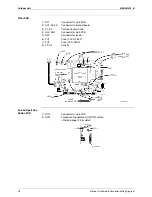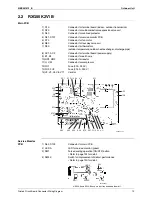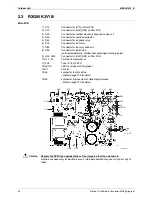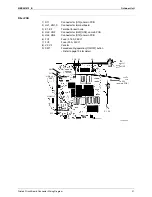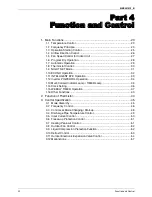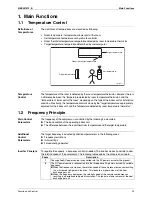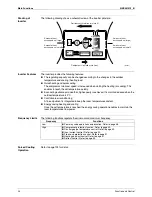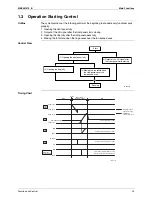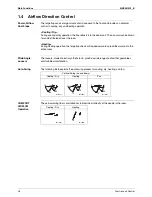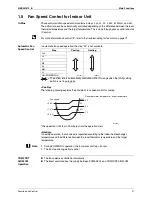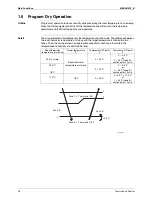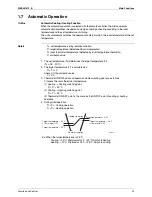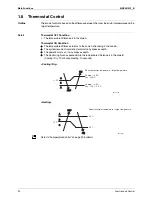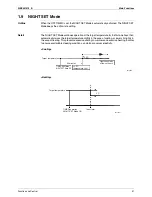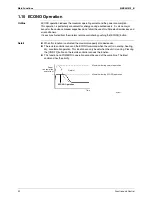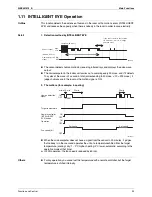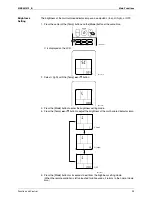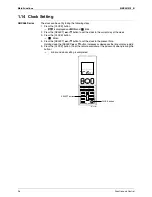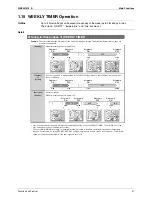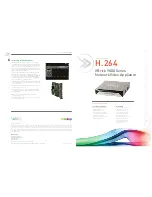
SiBE041012_B
Main Functions
Function and Control
23
1. Main Functions
1.1
Temperature Control
Definitions of
Temperatures
The definitions of temperatures are classified as following.
Room temperature: temperature of lower part of the room
Set temperature: temperature set by remote controller
Room thermistor temperature: temperature detected by room temperature thermistor
Target temperature: temperature determined by microcomputer
Temperature
Control
The temperature of the room is detected by the room temperature thermistor. However, there is
a difference between the “temperature detected by room temperature thermistor” and the
“temperature of lower part of the room”, depending on the type of the indoor unit or installation
condition. Practically, the temperature control is done by the “target temperature appropriately
adjusted for the indoor unit” and the “temperature detected by room temperature thermistor”.
1.2
Frequency Principle
Main Control
Parameters
The frequency of the compressor is controlled by the following 2 parameters:
The load condition of the operating indoor unit
The difference between the room thermistor temperature and the target temperature
Additional
Control
Parameters
The target frequency is adapted by additional parameters in the following cases:
Frequency restrictions
Initial settings
Forced cooling operation
Inverter Principle
To regulate the capacity, a frequency control is needed. The inverter makes it possible to alter
the rotation speed of the compressor. The following table explains the conversion principle:
Target temperature
Set temperature
Room temperature
Room thermistor temperature
(R12321)
Phase
Description
1
The supplied AC power source is converted into the DC power source for the present.
2
The DC power source is reconverted into the three phase AC power source with variable
frequency.
When the frequency increases, the rotation speed of the compressor increases resulting
in an increased refrigerant circulation. This leads to a higher amount of the heat
exchange per unit.
When the frequency decreases, the rotation speed of the compressor decreases
resulting in a decreased refrigerant circulation. This leads to a lower amount of the heat
exchange per unit.










